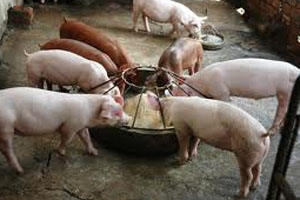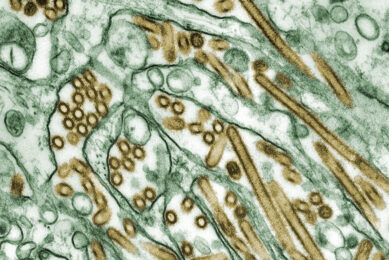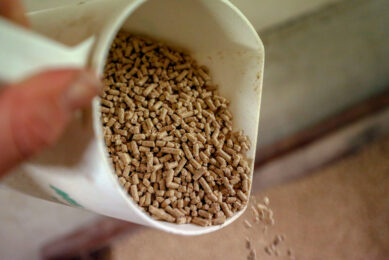Study: Effect of MOS on pig growth and feed efficiency

ABSTRACT: The study carried out by The Department of Animal Sciences, Ohio State University, Columbus, was conducted as a 3 x 2 factorial experiment in seven pen replications conducted using progeny (n = 360) of successive farrowings of one Landrace breeding female population.
By: B. A. Wenner, H. N. Zerby, D. D. Boler, W. A. Gebreyes, and S. J. Moeller
Grower-finisher dietary treatments included the addition of Bio-Mos (derived from a specific strain of yeast) (BM; at 0.2, 0.1 and 0.05% inclusion rates for phase 1 (30.2 to 63.5 kg), 2 (63.5 to 90.5 kg) and 3 (90.5 to 113.6 kg), respectively, the inclusion of a sub-therapeutic antibiotic (AB; tetracycline; at 0.0055% inclusion rate in all dietary phases) and a no additive control (C) diet.
Housing systems were a conventional, indoor (IN) facility providing 1.0 m2/pig solid concrete and 0.3 m2/pig slatted floor with twelve pigs per pen, and an outdoor access (OUT) system providing 1.1 m2/pig indoor, bedded concrete and 1.9 m2/pig outdoor solid concrete with six pigs per pen.
Housing systems analyses acknowledge confounding of space with number of pigs per pen. Daily growth rate (ADG), feed intake (ADFI) and feed conversion (G:F), ultrasonic carcass composition, blood hematocrit (one group) and observed illnesses were measured.
Dietary × housing treatment interactions were not observed. Pigs reared in OUT had greater ADFI (0.1 kg/d; P = 0.01) resulting in greater ADG (0.04 kg/d; P < 0.0005), and required fewer days (DAYS) to reach a standard 113.6 kg endpoint (4.0 d; P < 0.0005), but had reduced (poorer) G:F (0.01 kg gain/kg feed; P = 0.05) when compared to IN. Pigs fed BM and C diets had greater ADG (0.02 kg/d; P < 0.05) and required 3 fewer days to 113.6 kg (P < 0.05) when compared with pigs fed AB. Carcass composition measures were not different across dietary or housing treatments.
Hematocrit was 2 units greater (P < 0.05) at the end of the trial (d 84) for OUT housed pigs, but not different at the start, d 28 or 56 of the trial. In the present study, the addition of a sub-therapeutic antibiotic in swine finisher diets did not improve pig growth, efficiency or health, while the addition of BM did not increase performance compared to the C diet in both housing systems, a finding suggesting the potential for improved gut health and or improved appetite in pigs not fed an antibiotic.
While pigs reared OUT had greater growth rate and a more desirable hematocrit level, the observed differences may be attributed to stocking density, number of pigs per pen, or outdoor access, effects that are not able to be fully described under the experimental design.
Journal of Animal Science 2013: Effect of mannan oligosaccharides (Bio-Mos) and outdoor access housing on pig growth, feed efficiency and carcass composition











